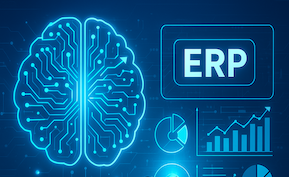Accounting
Composable Accounting Architecture: Building Modular Finance Stacks for Agility & Growth

Composable accounting represents a major shift in how finance teams design and manage their technology ecosystems. Instead of relying on one monolithic ERP system, businesses are building modular, API-connected accounting stacks—allowing faster innovation, simplified integrations, and scalability across global operations.
What is composable accounting?
Composable accounting architecture is the practice of assembling your financial system from smaller, specialized modules—each focused on a specific function like general ledger, billing, or consolidation. These modules communicate through APIs and cloud integrations, forming a unified but flexible ecosystem.
Why composable finance stacks are on the rise
- Agility: Quickly integrate new tools as your business model evolves (e.g., moving from product sales to subscriptions).
- Scalability: Scale modules independently based on transaction volume or entity growth.
- Innovation: Plug in AI, blockchain, or analytics tools without re-platforming your entire system.
- Resilience: If one component fails, others continue functioning, reducing downtime risk.
Core principles of composable accounting systems
- API-first design: Every component—whether for billing, AR/AP, or reporting—communicates via open APIs.
- Microservices architecture: Decoupled modules can be deployed, updated, or replaced independently.
- Data interoperability: Shared data standards (like XBRL, JSON, or ISO 20022) ensure smooth data flow.
- Event-driven automation: Real-time triggers synchronize actions across modules (e.g., invoice issued → ledger entry posted → dashboard updated).
- Cloud-native infrastructure: Elastic scaling and automatic updates keep systems modern and secure.
Example of a composable accounting stack
- Core ledger: NetSuite or Xledger for double-entry management.
- Billing engine: Chargebee or Zuora for subscription management.
- Expense management: Airbase or Ramp for spend automation.
- Analytics: Power BI or Looker for financial insights.
- Workflow automation: Zapier, Workato, or n8n connecting all of the above.
Benefits of composable accounting
- Faster change cycles: Deploy or upgrade components without disrupting the full system.
- Best-of-breed flexibility: Choose the most effective tools for each business process.
- Cost optimization: Pay only for the functionality you use—no unnecessary license bundles.
- Enhanced analytics: Real-time, cross-system financial visibility through unified APIs.
Challenges & how to mitigate them
- Integration complexity: Use middleware or iPaaS (e.g., MuleSoft, Boomi) to manage API orchestration.
- Data governance: Establish consistent master data policies across modules.
- Security management: Implement identity federation (SSO, OAuth) for all connected apps.
- Change fatigue: Document and train staff when adding or swapping modules.
Implementation roadmap
- Assess your current architecture: Identify core finance functions and integration pain points.
- Define a modular blueprint: Decide which functions should be decoupled (e.g., billing, analytics).
- Select integration standards: Use REST APIs, GraphQL, or ISO data formats for interoperability.
- Implement in phases: Start with one module (e.g., AP automation) and expand iteratively.
- Monitor & optimize: Use observability tools to track performance and data flow across systems.
KPIs to measure composable success
- Integration uptime: % of successful API calls and data syncs.
- Deployment velocity: Time to implement new modules or upgrades.
- Finance process efficiency: Time saved per transaction or reconciliation.
- System TCO (Total Cost of Ownership): Cost comparison versus legacy ERP systems.
Future trends in composable accounting
- AI augmentation: Predictive close processes and anomaly detection through machine learning APIs.
- Decentralized finance integration: Blockchain-based ledgers linked with traditional systems.
- Finance as a Service (FaaS): Outsourced modular accounting components for startups and SMBs.
SEO-friendly FAQs
What is composable accounting? It’s a modular approach to financial system design that connects specialized tools via APIs instead of using a single monolithic ERP.
How does it help finance teams? It increases flexibility, reduces costs, and enables faster innovation by allowing independent module upgrades.
Is composable accounting secure? Yes, with proper data governance, API encryption, and identity management across all modules.
Which companies benefit most? Growing mid-market firms and enterprises with multi-entity operations or complex business models.
Bottom line
Composable accounting is the future of finance architecture. By breaking monolithic systems into modular, interoperable components, organizations can scale faster, innovate continuously, and stay compliant in an ever-changing financial landscape.






